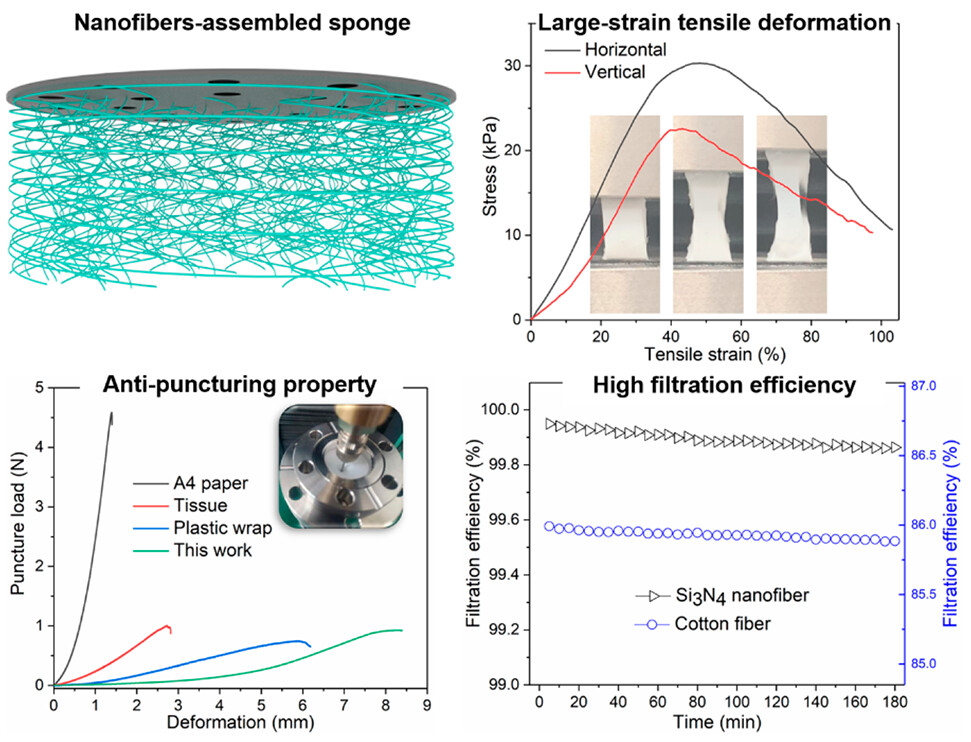Ceramic nanofiber-assembled ultralight materials such as sponges and aerogels exhibits high porosity, low thermal conductivity, high specific surface area, and high temperature thermal and chemical stability, making them promising applications in areas of aerospace vehicles, thermal protection, and gas filtration. In recent years, to optimize the mechanical properties of this class of ultralight materials, efforts have been made in tuning the morphology of the nanofibers and the nanofiber-assembled architectures, realizing ultralight ceramic materials with reversible compressibility, reversible bendability, and reversible stretch, respectively. However, it remains challenges in improving the mechanical performance of these materials in more complex stress conditions. For example, ceramic sponges or aerogels which could suffer from puncturing are rarely reported.
To overcome the abovementioned drawbacks, researchers from Xi’an Jiaotong University developed a controllable chemical vapor reaction method to obtain an ultralight ceramic sponge assembled by highly-aligned and interweaving Si3N4 nanofibers. The sponge exhibits super flexibility, large-strain reversible stretch (20%), large break elongation (>80%), reversible compressibility up to 60% strain, and the attractive puncture resistance. Benefiting from the unique 3D architecture, the sponge also shows high air filtration efficiency (>99.8%) and low pressure drop (38% of cotton fiber). The combination of these properties makes it a high-performance gas filtration material under complex stress states.

The research is published in an article entitled “Resilient and Antipuncturing Si3N4 Nanofiber Sponge” on Nano Letters. The work was completed by doctoral candidate Mingzhu Li, Prof. Hongjie Wang and Dr. Lei Su, et al. This research was supported by the Natural Science Foundation of China. The full article can be accessed with the following link:
https://pubs.acs.org/doi/10.1021/acs.nanolett.2c04475


